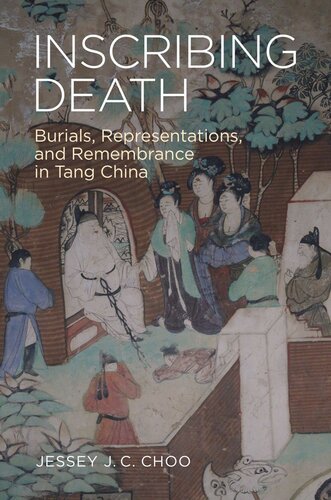

Most ebook files are in PDF format, so you can easily read them using various software such as Foxit Reader or directly on the Google Chrome browser.
Some ebook files are released by publishers in other formats such as .awz, .mobi, .epub, .fb2, etc. You may need to install specific software to read these formats on mobile/PC, such as Calibre.
Please read the tutorial at this link: https://ebookbell.com/faq
We offer FREE conversion to the popular formats you request; however, this may take some time. Therefore, right after payment, please email us, and we will try to provide the service as quickly as possible.
For some exceptional file formats or broken links (if any), please refrain from opening any disputes. Instead, email us first, and we will try to assist within a maximum of 6 hours.
EbookBell Team

4.8
74 reviewsThis nuanced study traces how Chinese came to view death as an opportunity to fashion and convey social identities and memories during the medieval period (200–1000) and the Tang dynasty (618–907), specifically. As Chinese society became increasingly multicultural and multireligious, to achieve these aims people selectively adopted, portrayed, and interpreted various acts of remembrance. Included in these were new and evolving burial, mourning, and commemorative practices: joint-burials of spouses, extended family members, and coreligionists; relocation and reburial of bodies; posthumous marriage and divorce; interment of a summoned soul in the absence of a body; and many changes to the classical mourning and commemorative rites that became the norm during the period. Individuals independently constructed the socio-religious meanings of a particular death and the handling of corpses by engaging in and reviewing acts of remembrance.
Drawing on a variety of sources, including hundreds of newly excavated entombed epitaph inscriptions, Inscribing Death illuminates the process through which the living—and the dead—negotiated this multiplicity of meanings and how they shaped their memories and identities both as individuals and as part of collectives. In particular, it details the growing emphasis on remembrance as an expression of filial piety and the grave as a focal point of ancestral sacrifice. The work also identifies different modes of construction and representation of the self in life and death, deepening our understanding of ancestral worship and its changing modus operandi and continuous shaping influence on the most intimate human relationships—thus challenging the current monolithic representation of ancestral worship as an extension of families rather than individuals in medieval China.